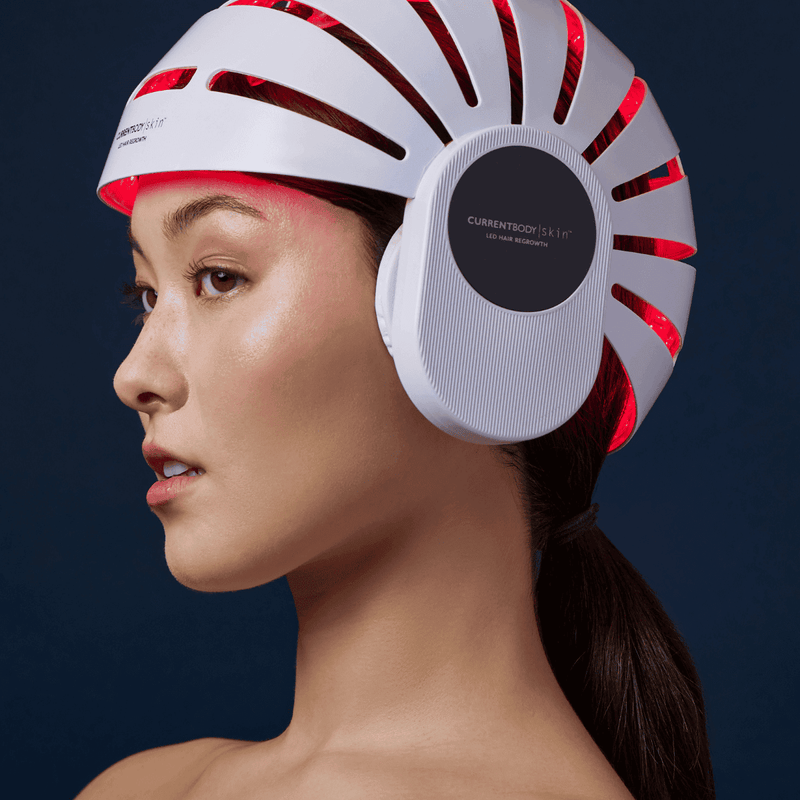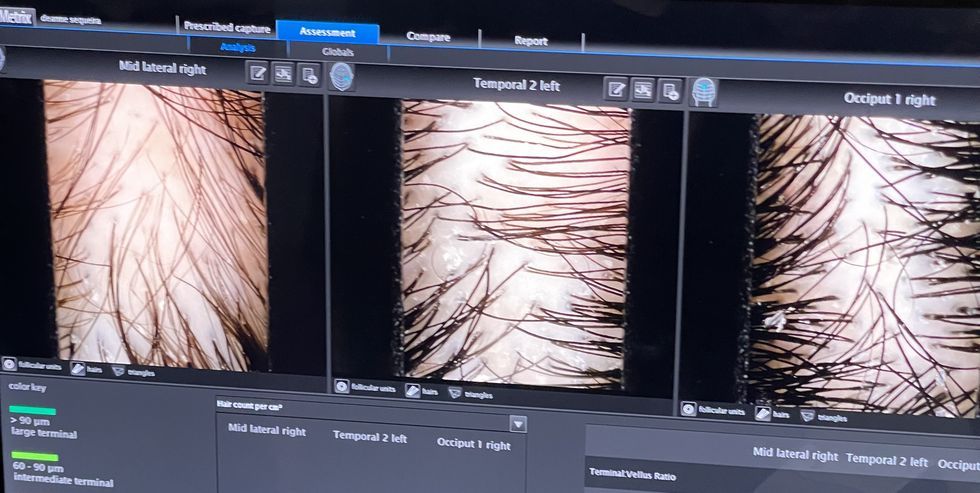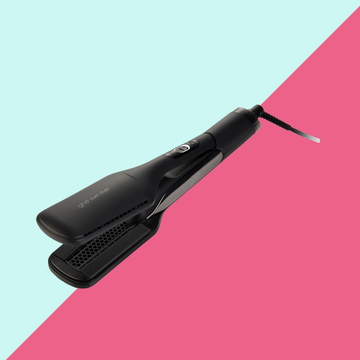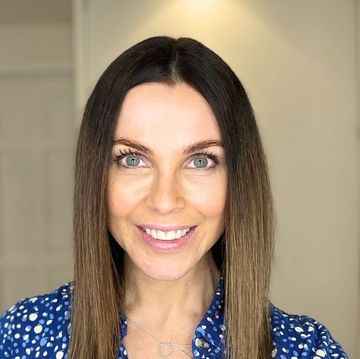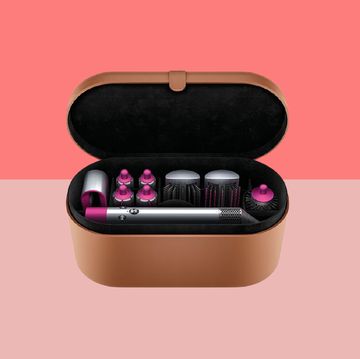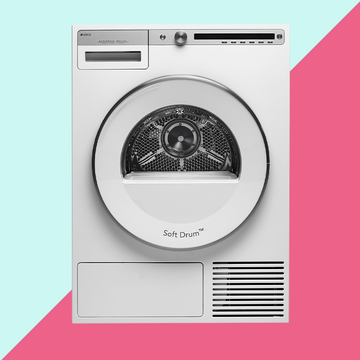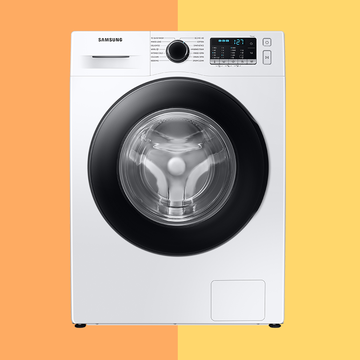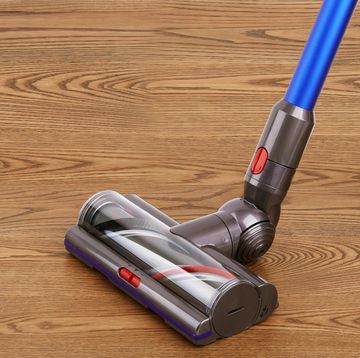CurrentBody is dedicated to making salon skincare treatments and beauty tech available to use at home, so you can tighten, firm and transform all while you watch Netflix.
You may have seen fashion and beauty guru, Trinny Woodall, draped in red light therapy devices on social media. She's a CurrentBody mega-fan, and for good reason. From the best microcurrent devices to the best LED face masks, it's the place to go for the latest DIY beauty tech.
And the brand's LED Hair Regrowth Device is its biggest innovation yet. Designed to help boost hair strength and thickness, it looks like something straight out of a science fiction film. And our experts in the Good Housekeeping Institute beauty lab couldn't wait to put it to the test.
What to read next
How does the LED Hair Regrowth Device work?
Designed to combat hair loss and thinning, the helmet uses red light therapy (aka cellular LED) to increase blood flow to the scalp and fight inflammation. This draws essential nutrients and oxygen to the hair follicles to help keep them in the growth phase for longer.
The helmet comes in two sizes and is supposed to be worn on dry, product-free hair for 10 minutes a day over 16 weeks. Depending on your individual hair-growth cycle, CurrentBody says you should start to see results by six to eight weeks. It claims to deliver 126% more hair growth than topical, laser and supplement treatments alone.
But does it actually work and does it justify its hefty price tag? Here's our verdict.
How we tested the hair regrowth helmet
We recruited eight panellists who were all experiencing hair loss and hair thinning to trial the helmet. They used it for the recommended 16 weeks to assess regrowth, thickening and overall strength of their hair. They also gave feedback on design, ease of use and clarity of instructions.
In the lab, we used a Hair Metrix machine to check hair width and follicular units per cm2 before, during and after the 16-week test period, so we could measure any increase in thickness and volume.
NOTE: The hair regrowth helmet is not designed to treat those with medical conditions such as alopecia or male/female pattern baldness. Please speak to a medical professional for advice on handling these concerns.
The results
Score: 70/100
What we liked
Our experts found the device made a marked difference to the thickness and volume of our panellists’ hair by the end of the 16-week trial. And feedback from our panellists backed this up.
“Other people started to tell me my hair looked fuller and all I'd been doing was using this every day,” said one of our testers, while another told us: “It was easy to use, had clear instructions and as it's wireless, I could use it wherever I was in the house. I could even connect the headphones to my laptop, so I could watch the telly while wearing it.”
“It was comfortable to wear and had adjustments for the ear pieces. I started to notice new regrowth at around six to eight weeks,” said another.
The fact it's wireless and you can move around while wearing it is a definite pro, while the built-in earphones help to beat boredom while it gets to work – a feature that was popular with all our panellists.
What we didn't like
It’s expensive at £650, bulky and only works if you’re consistent with it (we’re talking 10 minutes every single day for 16 weeks, without fail).
“It's not great for longer hair as it can pull or break longer strands off while removing it from your head,” noted one panel member.
“It's too bulky to travel with and takes up a lot of space, so you couldn't use it if you had a trip planned or even if you're not driving between destinations,” added another, while one commented: “The beep it gave when it was finished or running out of charge was so loud, it always gave me a shock.”
The verdict
It definitely seems to have improved the density of our testers' hair and delivered new growth with consistent use, but it's not ideal if you've got a lifestyle that means you're on the move a lot, or if you struggle to stick to new habits.
There's no getting around the price, but if you do choose to invest, the brand provides a 16-week money back guarantee, so you can make sure it's right for you.
FAQs
What is the CurrentBody LED Hair Regrowth device?
The hair regrowth helmet is a pain-free, rechargeable LED device that stimulates the hair follicles to prevent further hair loss and support new growth. Specifically designed to address the whole scalp area, it’s a market-first, at-home hair regrowth device and is, according to the brand, clinically proven to grow more hair than other chemical hair loss products.
But how does it work? Well, it increases energy at a cellular level to power hair growth. It uses red light (LED) to create more Adenosine Triphosphate (ATP), energy-carrying molecules that support hair cell renewal, stimulating growth. Red light targets a range of factors associated with androgenetic alopecia, such as reduced blood flow and inflammation.
The device also inhibits the production of the enzyme that converts testosterone into dihydrotestosterone (DHT). This reduces the risk of follicle damage from DHT, which typically limits the follicles’ access to nutrients, weakening the hair and causing it to fall out. The helmet also increases the production of the natural chemicals in the body that reduce inflammation, thereby reducing the risk of damage to the follicles once again.
Who is the CurrentBody LED Hair Regrowth device for?
While male hair loss is more commonly targeted and referred to in the media – and in hair growth treatments – female hair loss is an increasingly hot topic. “40% of pre-menopausal women will experience hair loss at some point in their lives,” explains Dr. Quinton Chivers, a board-certified plastic surgeon at Canadian Dermatology, Plastic Surgery and Hair Transplantation Centre in Toronto, Canada. “By age 80, over 80% of women will experience hair loss in some capacity.”
Suitable for both men and women, the hair regrowth helmet is designed to combat this growing problem and can be used for both the entire head or specific areas of concern, including receding hairlines, thinning hair, pattern baldness and hair loss on the crown of the head.
What causes hair loss and thinning as we age?
A genetically driven condition called androgenetic alopecia is the most common cause of hair loss and affects more than 50% of the population. In men, it causes a receding hairline and hair loss on the head’s crown, and in women, it can lead to hair thinning across the scalp. Inflammation can also be a factor at play, either because of an inflamed scalp itself or by the itchiness caused when scratching, leading to damaged follicles.
Menopause can exacerbate age-related hair loss, due to the reduction in oestrogen levels, as oestrogen helps to keep our follicles healthy. Using red light therapy to increase blood flow to the scalp can help protect against this. If you're experiencing menopausal hair loss, take a look at our menopause shampoo review.
LED vs. laser for hair growth
LED light penetrates to the same depth as laser but works on the whole head, while laser devices use diodes that only treat one small area on the scalp at a time. LED also doesn’t generate heat, which means it can be used more flexibly at home and on holiday, whereas many laser devices can’t be used in hot conditions.
This specific device predominantly uses 640nm wavelength light, but delivers therapeutic light across a broader spectrum, with three other clinically corroborated wavelengths for hair growth (630, 650 and 655). Laser devices only deliver one specific wavelength.
Shop the LED Hair Regrowth helmet at CurrentBody
Florence is our Senior Beauty Writer, specialising in expert-tested beauty and grooming reviews — from toothbrushes to the latest skincare launches. She’s committed to sharing recommendations for products that truly work and make people feel confident and healthy. Prior to this she was at Tropic Skincare, where she worked closely with biochemists in the lab, delving into the functions of each fresh, natural ingredient and conveying its efficacy to her audience in easy-to-digest terms.
With over five years’ experience in beauty and health journalism, Florence has written for ELLE, Women’s Fitness, Sister Magazine, National Geographic Traveller and many more, with a strong sustainability angle thread through much of her work.
When she isn’t packing for a trip away, working out, eating out or reading up on retinol serums, you’ll probably find her experimenting with her film camera and building her portfolio of portraits. Florence’s photography can be found at florencereeves-white.com, her Instagram is @florencereeveswhite and her twitter is @floreadsnwrites
Maria is our Beauty and Grooming Testing Manager, and since joining in mid-2022, she has managed the testing for mutiple categories including scalp scrubs, collagen supplements and retinol serums. In addition to her master's degree in chemical engineering and a diploma in cosmetic science, she recently received her MBA from the London College of Fashion, focusing on case studies within the beauty industry. Prior to joining the company, she worked within the global technical team at the Estee Lauder Companies for over six years, collaborating with the chemists and engineers to launch luxury beauty products at scale and to quality. She has also worked as a formulation scientist within the pharmaceutical industry and takes this evidence based approach into all her product testing.



